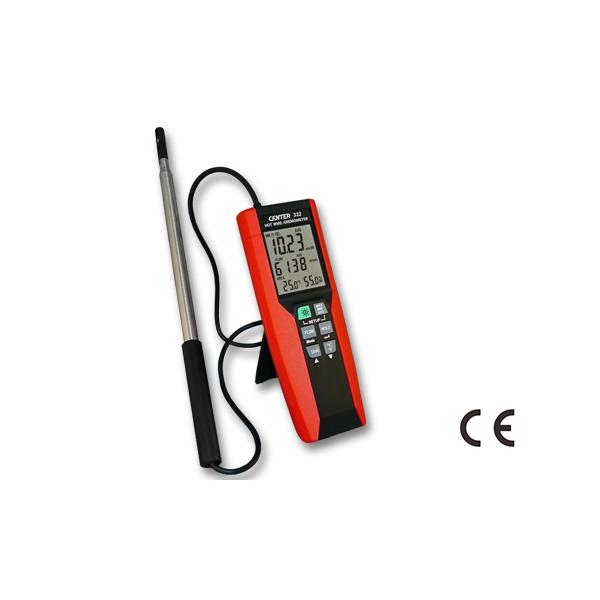All You Need to Understand About Anemometers: How They Function, Why They Issue, and Where to Use Them
Anemometers, though usually forgotten in the realm of clinical tools, play a crucial role in numerous areas, providing valuable insights right into wind speed and air flow patterns. As we dive into the ins and outs of anemometer modern technology, we will certainly reveal the inner functions of these tools, their significance, and the essential factors to consider when selecting the right anemometer for particular applications.

Anemometer Essentials
An important tool used to gauge wind speed and instructions, the anemometer plays an essential duty in meteorology and different industries. An anemometer normally consists of three or 4 mugs that rotate in the wind, a vane that aims into the wind, and sensors to track the motions or turnings.
There are various sorts of anemometers available, including cup anemometers, vane anemometers, hot-wire anemometers, and sonic anemometers, each with its one-of-a-kind functions and applications. Mug anemometers are commonly utilized for fundamental wind rate measurements, while vane anemometers are chosen for directional dimensions. Hot-wire anemometers appropriate for low airspeeds, and sonic anemometers are optimal for high-precision measurements in research study and commercial settings. Understanding the fundamentals of anemometers is vital for exact wind data collection and analysis across various fields.
Principles of Anemometer Operation
Building on the fundamental understanding of anemometer fundamentals, the principles of anemometer procedure elucidate the technicians behind wind rate and direction dimensions. Cup anemometers, for instance, have 3 or more mugs that capture the wind, creating them to spin much faster as the wind speed increases. Hot-wire anemometers depend on a warmed wire that cools down as wind passes over it, with the price of cooling determining the wind rate.
Significance of Anemometers
The relevance of anemometers in meteorology and numerous markets can not be overstated. Anemometers play a crucial function in measuring wind rate and instructions, offering essential data for climate forecasting, environment researches, environmental surveillance, and aviation operations. Meteorologists depend on anemometers to gather precise wind information, helping them comprehend climate patterns, forecast tornados, and issue timely cautions to the general public. In industries such as building, farming, eco-friendly energy, and maritime operations, anemometers are made use of to maximize processes, guarantee security, and raise efficiency. For example, wind ranch drivers make use of anemometers to assess wind conditions and maximize electrical power manufacturing from wind generators. In the maritime field, anemometers help ship navigation by providing real-time wind information to captains, assisting them make notified decisions to make sure risk-free trips. Generally, anemometers are vital devices that add dramatically to safety and security, efficiency, and informed decision-making in meteorology and a wide variety of industries.
Applications Across Various Industries
In the sustainable energy industry, anemometers play a vital function in examining wind conditions for wind farm placements, ensuring optimum power manufacturing. Industries like building and mining use anemometers to keep track of wind speeds, crucial for safety and security methods, specifically when working at heights or in open-pit mines where solid winds can posture dangers. In agriculture, anemometers assist farmers in managing plant spraying by providing real-time information on wind rate to prevent drift.

Choosing the Right Anemometer for Your Requirements
For basic functions, a cup anemometer is suitable for determining wind speed, while a vane anemometer provides wind direction data. Hot-wire anemometers are optimal for low airspeed measurements, and ultrasonic anemometers supply high precision and toughness.

Verdict
To conclude, anemometers play an essential duty in gauging wind speed and instructions throughout numerous sectors. Comprehending the principles of anemometer procedure is vital for selecting the appropriate gadget for specific requirements. From meteorology to air travel, anemometers are important devices informative post for collecting exact data and making certain safety in various applications. It is very important to take into consideration the importance of anemometers in order to make enlightened decisions when selecting one of the most suitable gadget for measuring wind problems.
There are various types of anemometers offered, including mug anemometers, vane anemometers, hot-wire anemometers, and sonic anemometers, each with its one-of-a-kind features and applications. Cup anemometers are typically utilized for fundamental wind rate dimensions, while vane anemometers are liked for directional dimensions. Hot-wire anemometers are ideal for reduced airspeeds, and sonic anemometers are ideal for high-precision measurements in research and industrial settings.Building on click here to read the foundational understanding of anemometer basics, the principles of anemometer operation illuminate the mechanics behind wind speed and instructions dimensions. For general functions, a cup anemometer is appropriate for measuring wind speed, while a vane anemometer provides wind direction information.